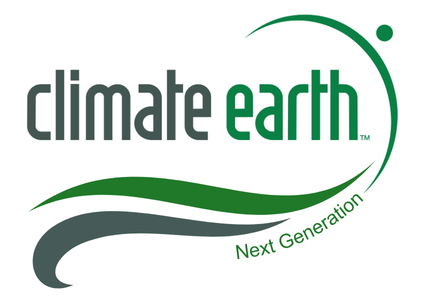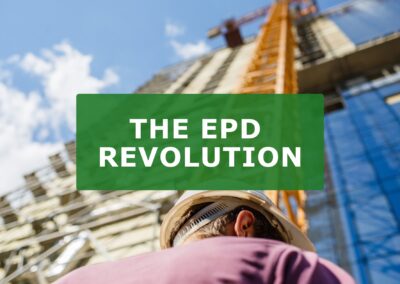At its recent conference on October 30, 2024, the European Commission announced significant updates to the Construction Products Regulation (CPR). The CPR is a set of rules created by the European Commission to ensure that construction materials are safe, perform well, and contribute to sustainability.
 The updated CPR will establish a clear framework modeled after the Ecodesign for Sustainable Products Regulation (ESPR) measures to improve the environmental impact of construction products throughout their lifecycle. The ESPR focuses on enhancing the sustainability of products by setting requirements for their environmental performance at every stage, from design to disposal.
The updated CPR will establish a clear framework modeled after the Ecodesign for Sustainable Products Regulation (ESPR) measures to improve the environmental impact of construction products throughout their lifecycle. The ESPR focuses on enhancing the sustainability of products by setting requirements for their environmental performance at every stage, from design to disposal.
By incorporating similar principles from the ESPR into the CPR, this merger streamlines the process for manufacturers to comply with sustainability standards in the construction industry.
Since the original CPR was introduced in 2011, we’ve witnessed a gradual yet profound shift toward transparency and environmental responsibility. The updated CPR will incorporate the environmental requirements from the EN 15804 standard to provide essential guidelines for measuring and reporting environmental impacts.
The EN 15804 is a European standard that establishes rules for creating Environmental Product Declarations (EPDs) for construction products, EPDs transparently report a product’s environmental impact, including energy use, emissions, and resource consumption. They enable manufacturers to assess and communicate their products’ environmental footprint clearly across the supply chain.
Impact on Concrete Producers: A New Era of Sustainability and Accountability
The updated CPR places concrete producers at the forefront of sustainable construction, requiring full lifecycle emissions reporting and digital documentation that align with EU climate goals—driving a new standard of environmental accountability in the industry.

Lifecycle Emission Calculation and Digital Transition
- Lifecycle Emissions Reporting: Concrete producers (and all construction product manufacturers) must now calculate and disclose lifecycle emissions, moving beyond voluntary initiatives.
- Digital Transition: The CPR introduces a fully digital system with a Construction Product Passport, similar to a Digital Product Passport (DPP), including the Declaration of Performance (DoP) for each product.
Core Requirements for Product Performance
- Functionality, Safety, and Environment: The CPR now requires producers to declare essential characteristics of their products.
- Environmental Sustainability Essential Characteristics: Based on the EN 15804 standard, reporting requirements will be specific to each product. Concrete producers will have to follow the EN 15804 in combination with the EF 3.1 impact assessment method to calculate and disclose environmental impacts.
Phased Implementation of Environmental Standards
- Publication Timeline: The CPR will be published by the end of the year, with Member States having a set timeframe for adoption.
- Phases for Environmental Categories:
- Phase One: Initial reporting on Global Warming Potential (GWP).
- Phase Two: Expanded reporting to include additional impact categories.
- Phase Three: Comprehensive reporting of all categories aligned with EN 15804 standards, ensuring robust life cycle assessment for concrete and other materials.
Alignment with Broader Regulatory Frameworks
- Ecodesign for Sustainable Products Regulation (ESPR): Energy-related products used in construction, but outside the CPR’s scope, will fall under ESPR. This alignment provides a clear regulatory division.
- Energy Performance of Buildings Directive (EPBD): Data from the CPR will support building assessments under the EPBD using EN 15978 standards. By 2027, buildings over 1,000 m² will need to disclose GWP in their energy performance certificates, creating a stronger market for environmentally accountable products.
Concrete-Specific Product Focus and Rollout Timeline
- Priority Products: Concrete is among the key materials prioritized due to its high environmental impact and broad usage in construction. However, establishing product-specific standards will take time, as standards are being tailored for precision across materials like steel, insulation, and bricks.
Role of Member States in Harmonization
- Performance Thresholds: Member States can set minimum and maximum thresholds for concrete products and specify national requirements for use. However, they must adhere to standardized impact assessment methods and cannot alter essential characteristics.
- Harmonized Zone: National authorities may adopt more ambitious thresholds within this Harmonized Zone, as outlined in Annex VII, to ensure regulatory consistency across EU borders.
Stakeholder Engagement and Compliance Urgency
- Call to Action: The European Commission emphasizes the need for manufacturers, service providers, consultants and Member States, to expedite the work towards compliance with CPR goals.
- CPR Aquis Expert Group: This group, involved in standard development, will engage industry actors to help shape harmonized standards, giving concrete producers a platform for input on regulatory development.
System 3.0: Comprehensive Third-Party Verification
- Uniform Compliance Verification: All construction products, including concrete, will be subject to a third-party verification system (System 3.0), ensuring sector-wide compliance with CPR standards.
Standardized Reporting and Procurement Regulations
- Essential Characteristics Only: Concrete producers will report only those essential characteristics required for their market, minimizing reporting burdens. Additionally, green procurement schemes cannot demand additional labels beyond the CPR scope, keeping reporting streamlined and consistent across the EU.
The Path Forward
Concrete producers will face several challenges as they work to meet the updated CPR requirements:
- Complexity in Data Collection and Analysis: Creating an EPD and meeting the coming CPR product requirements demands extensive data on raw materials, energy usage, emissions, and other exchanges throughout the lifecycle of each product. Gathering and accurately analyzing this data—particularly for complex products like concrete—can be challenging and time-consuming without the right tools.
- Need for Consistency and Standardization: CPR requirements now call for uniform methodologies, like the EN 15804 standard, to ensure consistency across declarations. However, navigating these standards requires significant expertise, especially as the CPR impact categories continue to evolve.
- Digital Transition and Transparency Requirements: The move toward digital Construction Product Passports requires concrete producers to be prepared for 100% digital documentation. This digital shift may demand system upgrades and expertise that aren’t readily available in-house, especially for companies newer to digital EPD management.
- Third-Party Verification: With the introduction of System 3.0 third-party verification, concrete producers will need to ensure their data and methodologies are accurate and consistent, passing a new level of scrutiny that many are unprepared to meet independently.
Partnering with Climate Earth helps concrete producers overcome these challenges. Climate Earth specializes in automating EPD generation, standardizing data collection, and creating a streamlined process for producing, managing, and digitally sharing EPDs that meet CPR requirements.
This way concrete producers stay compliant, competitive, and sustainable with minimal disruption to existing operations. We are here to help you! Whether you’d like to learn more from our experts or see our software in action – get in touch here.



